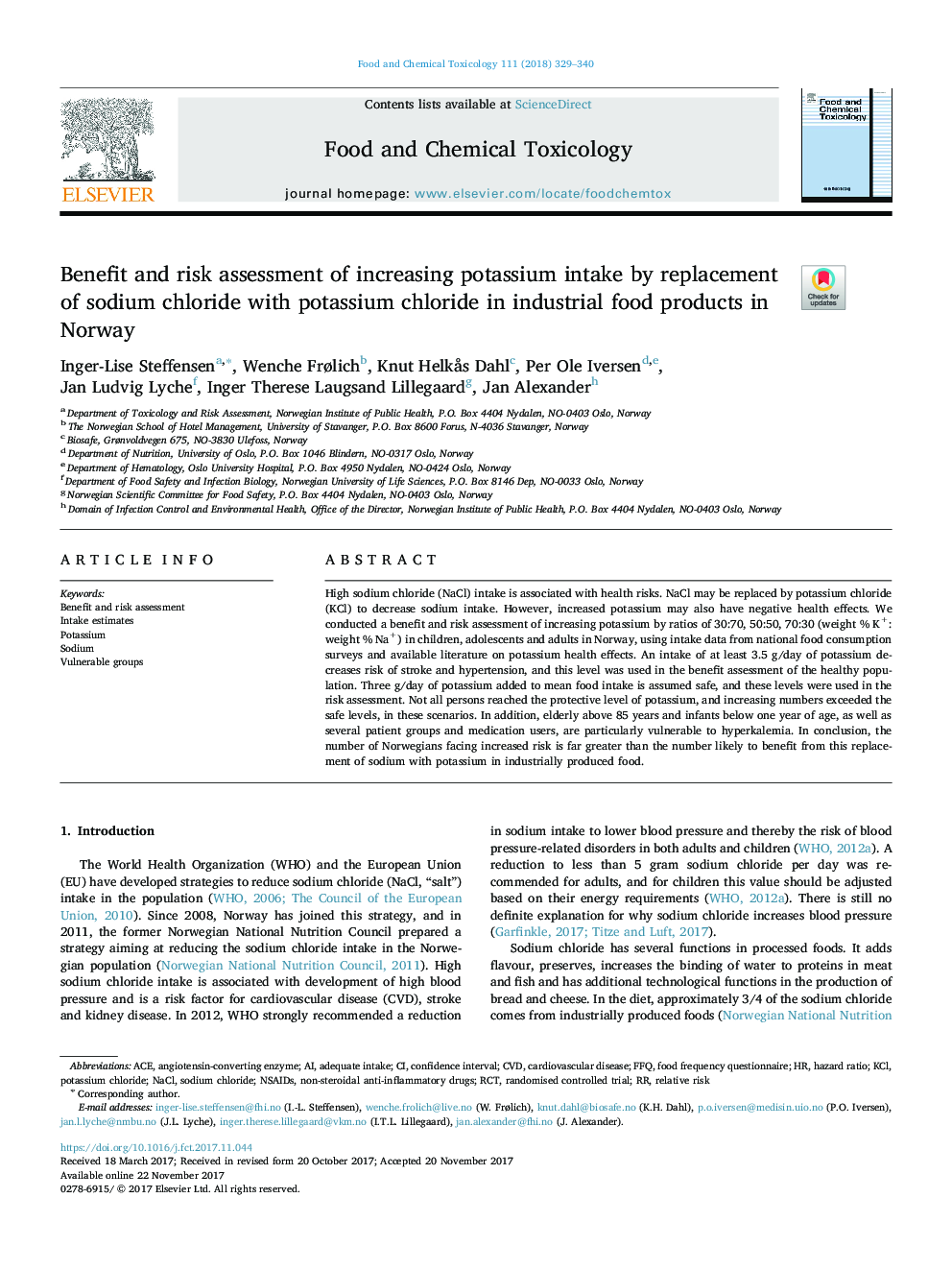| کد مقاله | کد نشریه | سال انتشار | مقاله انگلیسی | نسخه تمام متن |
|---|---|---|---|---|
| 8548531 | 1561736 | 2018 | 12 صفحه PDF | دانلود رایگان |
عنوان انگلیسی مقاله ISI
Benefit and risk assessment of increasing potassium intake by replacement of sodium chloride with potassium chloride in industrial food products in Norway
ترجمه فارسی عنوان
مزایای و ارزیابی خطر افزایش مصرف پتاسیم با جایگزینی کلرید سدیم با کلرید پتاسیم در محصولات غذایی صنعتی در نروژ
دانلود مقاله + سفارش ترجمه
دانلود مقاله ISI انگلیسی
رایگان برای ایرانیان
کلمات کلیدی
NSAIDSKClNaClACERCTFFQRandomised controlled trial - آزمایش تصادفی کنترل شدهAngiotensin-converting enzyme - آنژیوتانسین تبدیل آنزیمcardiovascular disease - بیماری قلب و عروقیRelative risk - خطر نسبیNon-steroidal anti-inflammatory drugs - داروهای ضد التهابی غیر استروئیدیCVD - رسوب دهی شیمیایی بخار Sodium - سدیم Sodium chloride - سدیم کلریدconfidence interval - فاصله اطمینانadequate intake - مصرف کافیhazard ratio - نسبت خطرPotassium - پتاسیمfood frequency questionnaire - پرسشنامه فرکانس غذاPotassium chloride - کلرید پتاسیمVulnerable groups - گروه های آسیب پذیر
موضوعات مرتبط
علوم زیستی و بیوفناوری
علوم کشاورزی و بیولوژیک
دانش تغذیه
چکیده انگلیسی
High sodium chloride (NaCl) intake is associated with health risks. NaCl may be replaced by potassium chloride (KCl) to decrease sodium intake. However, increased potassium may also have negative health effects. We conducted a benefit and risk assessment of increasing potassium by ratios of 30:70, 50:50, 70:30 (weight % K+: weight % Na+) in children, adolescents and adults in Norway, using intake data from national food consumption surveys and available literature on potassium health effects. An intake of at least 3.5Â g/day of potassium decreases risk of stroke and hypertension, and this level was used in the benefit assessment of the healthy population. Three g/day of potassium added to mean food intake is assumed safe, and these levels were used in the risk assessment. Not all persons reached the protective level of potassium, and increasing numbers exceeded the safe levels, in these scenarios. In addition, elderly above 85 years and infants below one year of age, as well as several patient groups and medication users, are particularly vulnerable to hyperkalemia. In conclusion, the number of Norwegians facing increased risk is far greater than the number likely to benefit from this replacement of sodium with potassium in industrially produced food.
ناشر
Database: Elsevier - ScienceDirect (ساینس دایرکت)
Journal: Food and Chemical Toxicology - Volume 111, January 2018, Pages 329-340
Journal: Food and Chemical Toxicology - Volume 111, January 2018, Pages 329-340
نویسندگان
Inger-Lise Steffensen, Wenche Frølich, Knut Helkås Dahl, Per Ole Iversen, Jan Ludvig Lyche, Inger Therese Laugsand Lillegaard, Jan Alexander,
